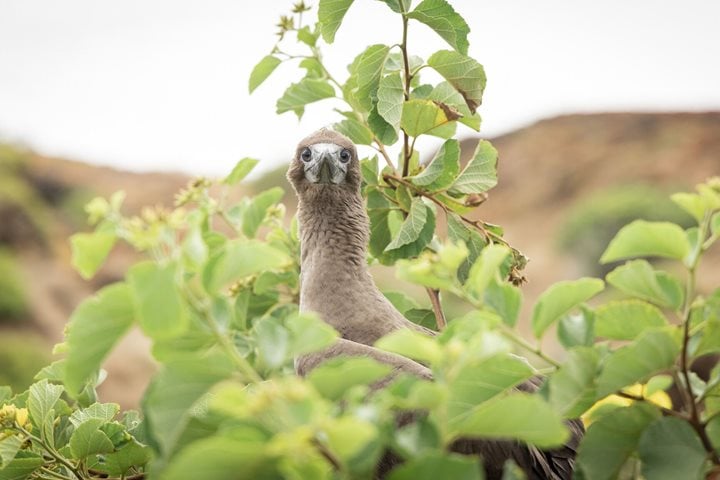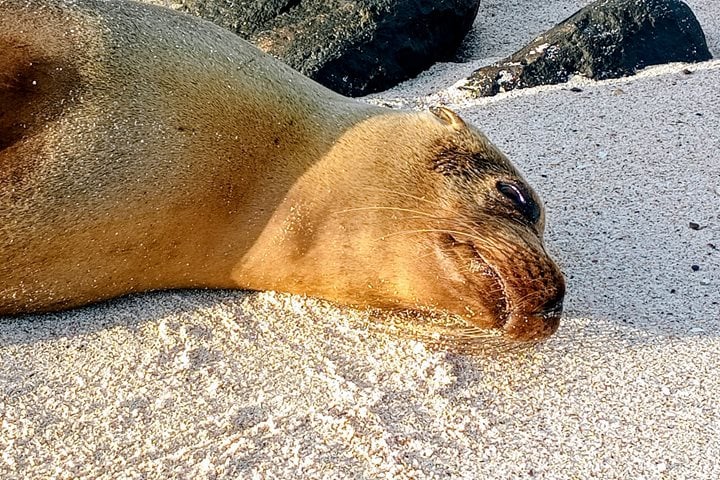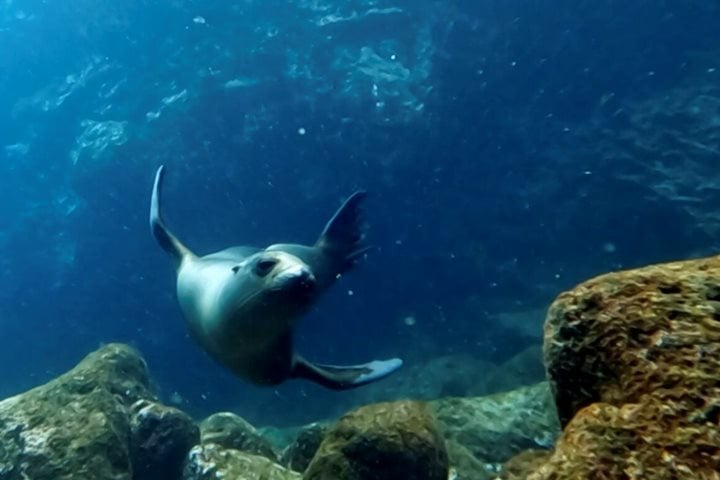Isabela is the largest island in the Galapagos, occupying 50% of the total area of the archipelago. It is one of the most beautiful islands with its diversity in fauna and flora and its incredible underwater world. Early in the morning, National Geographic Islander anchored in front of Urbina Bay, one of the most spectacular sites due to its incredible natural history. In 1954, 2 km² of underwater floor was lifted towards the sea surface, bringing with it gigantic coral heads, marine animals, and tiny crustaceans whose eco-skeletons can still be seen as petrified bodies in the rocks.
Just as we were getting ready to board Zodiacs after breakfast to head for the beach at Urbina Bay, Juan Carlos Avila, our Expedition Leader, spotted a pod of dolphins swimming near National Geographic Islander. We boarded our Zodiacs, and we approached them. The show they gave us was unforgettable. Many jumped very close to us, while others swam below us, all of them officially welcoming us to this beautiful part of the Galapagos archipelago. We walked inland on the beach, and we saw our first land iguanas basking along the trail. Many of them looked at us indifferently, while others simply walked through the bushes, looking for food. Near the end of the trail, we came across some tortoises that probably came down from the top of the Alcedo Volcano to nest.
Just before noon, National Geographic Islander began the voyage north toward Tagus Cove. One of the most popular and well-known sites for visitors of yesteryear, pirates and buccaneers used the site as a hideout after attacking and looting the Spanish galleons.
At 2:45 p.m., our activities began in Caleta Tagus, where our guests could choose between kayaking or deep-water snorkeling. The ocean was completely clear and calm, perfect for discovering the incredible underwater world that surrounds Isabela. A pleasant surprise was meeting Galapagos penguins, flightless cormorants, sea turtles, and sharks. The most incredible thing was probably coming face to face with three or four cat sharks that swam very close to us without even flinching.
Then, we got ready for our last outing. Many guests opted for a walk around Lake Darwin, observing this beautiful natural formation of a brackish water lake located just behind Tagus Bay. We observed many finches throughout the palo santo forest. At the end of the trail, the gigantic lava flows rose in front of us, like silent witnesses to the explosive past of the Galapagos.
I was with the guests who preferred the dinghy ride. Along the seashore, we saw many pelicans, sea turtles, and, of course, penguins and cormorants returning to their nests. Just before sunset, we returned to our beloved National Geographic Islander, tired but with the best memories of a day that will stay with us forever.







